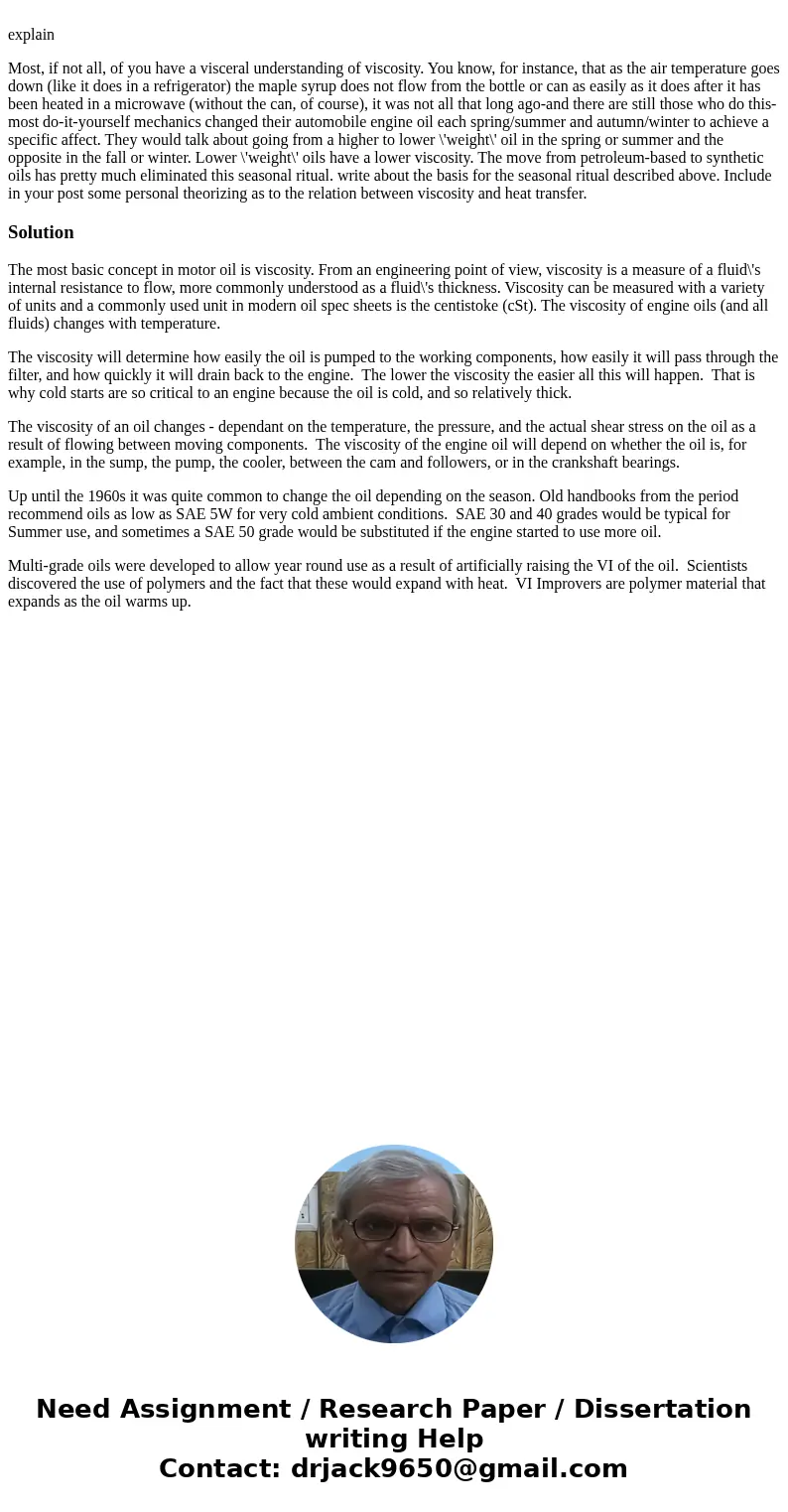explain Most if not all of you have a visceral understanding
explain
Solution
The most basic concept in motor oil is viscosity. From an engineering point of view, viscosity is a measure of a fluid\'s internal resistance to flow, more commonly understood as a fluid\'s thickness. Viscosity can be measured with a variety of units and a commonly used unit in modern oil spec sheets is the centistoke (cSt). The viscosity of engine oils (and all fluids) changes with temperature.
The viscosity will determine how easily the oil is pumped to the working components, how easily it will pass through the filter, and how quickly it will drain back to the engine. The lower the viscosity the easier all this will happen. That is why cold starts are so critical to an engine because the oil is cold, and so relatively thick.
The viscosity of an oil changes - dependant on the temperature, the pressure, and the actual shear stress on the oil as a result of flowing between moving components. The viscosity of the engine oil will depend on whether the oil is, for example, in the sump, the pump, the cooler, between the cam and followers, or in the crankshaft bearings.
Up until the 1960s it was quite common to change the oil depending on the season. Old handbooks from the period recommend oils as low as SAE 5W for very cold ambient conditions. SAE 30 and 40 grades would be typical for Summer use, and sometimes a SAE 50 grade would be substituted if the engine started to use more oil.
Multi-grade oils were developed to allow year round use as a result of artificially raising the VI of the oil. Scientists discovered the use of polymers and the fact that these would expand with heat. VI Improvers are polymer material that expands as the oil warms up.

 Homework Sourse
Homework Sourse